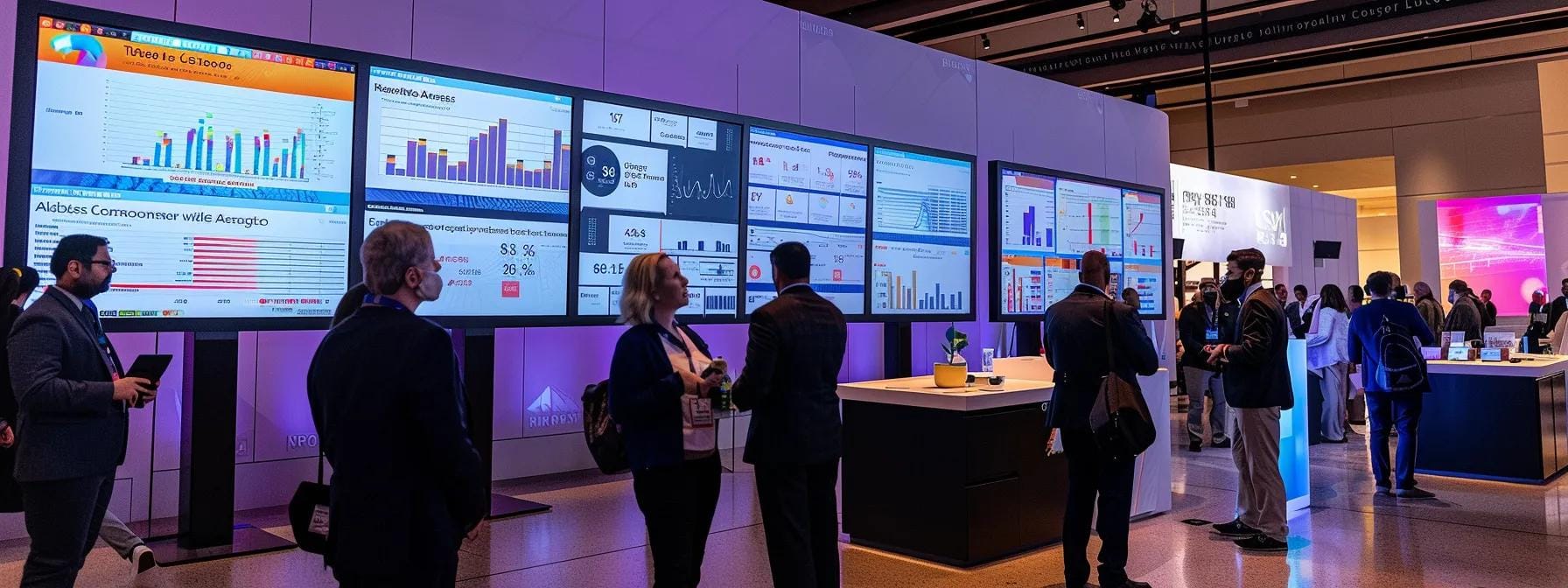Global Health Priorities 2025: Understanding Maternal Mortality, Pollution Effects, and Medicine Safety Guidelines
The global health landscape faces shifting socioeconomic conditions, environmental challenges, and policy reforms that both create opportunities and present obstacles in improving public health. In 2025, the focus is on reducing maternal mortality, mitigating pollution’s impact on health, and updating medicine safety guidelines. Governments, international organisations, and community groups are uniting through data, emerging technologies, and coordinated public health initiatives. This article examines global maternal mortality rates and trends, pollution’s effects on health outcomes, updated medicine safety guidelines, and WHO‐promoted public health initiatives for 2025. It also considers socioeconomic influences, innovative care solutions, and the need for data‐driven decision-making to advance public health.
Transitioning into the core content, the following sections highlight critical issues shaping the global public health agenda this year.
What Are the Latest Global Maternal Mortality Rates and Trends for 2025?
Global maternal mortality in 2025 shows marked disparities by region and income level. High-income nations have reduced deaths through comprehensive care, achieving maternal mortality ratios as low as 10 per 100,000 live births. Conversely, many low- and middle-income countries continue to face high rates—with some areas in sub-Saharan Africa surpassing 500 per 100,000 live births—due to limited access to quality obstetric services. The World Health Organisation (WHO) links these gaps to social determinants, such as income inequality, education, and inadequate healthcare infrastructure.
How Do Maternal Health Statistics Vary by Region and Income Level?
High-income countries benefit from advanced medical technologies and strong health policies, resulting in lower maternal mortality where most deaths involve preexisting conditions or rare complications. In contrast, lower-income regions experience higher mortality from preventable causes, like postpartum haemorrhage and infections. Political instability and underinvestment in healthcare further widen the gap between regions such as South Asia and parts of Africa, where access to skilled birth attendants and emergency services remains limited.
What Are the Leading Causes of Maternal Mortality Worldwide?
Maternal deaths predominantly result from severe bleeding, infections (especially postpartum), high blood pressure during pregnancy (preeclampsia and eclampsia), unsafe abortion complications, and obstructed labour. In low-resource settings, delayed detection and insufficient interventions exacerbate these risks, while factors such as advanced maternal age and chronic diseases (e.g., diabetes and hypertension) also impact higher-income regions. Timely treatment and preventive measures are essential, and many public health systems are strengthening protocols to address these challenges.
How Is WHO Addressing Maternal Mortality in 2025?
To meet the Sustainable Development Goals (SDGs) by 2030, WHO has launched global initiatives that include improving prenatal and postnatal care, ensuring prompt access to emergency obstetric services, and increasing community education on safe childbirth. WHO also promotes digital health monitoring to capture real-time data and guide rapid responses. Collaborations with local governments and NGOs include capacity-building programs to ensure rural and underserved healthcare providers have the skills they need, while multi-sectoral partnerships address the underlying social determinants of maternal mortality.
How Does Pollution Impact Public Health and Maternal Outcomes in 2025?

Environmental pollution remains a significant public health threat in 2025 with major implications for maternal and child health. Exposure to fine particulate matter (PM2.5) and industrial chemicals is linked to low birth weight, preterm birth, and increased prenatal mortality. Experts warn that microplastics and endocrine disruptors further compromise immune and reproductive systems, compounding risks during pregnancy.
What Are the Main Types of Pollution Affecting Health Globally?
Key pollutants include particulate matter, nitrogen oxides (NOₓ), sulphur dioxide (SO₂), heavy metals, and volatile organic compounds (VOCs). Industrial emissions and transportation exhaust significantly contribute to ambient air pollution, while agricultural runoff affects water quality. Additionally, indoor pollution from biomass fuels remains a problem in low-income settings, exacerbating respiratory issues among pregnant women and children. These challenges have spurred calls for stricter environmental regulations and international cooperation on sustainability.
How Does Pollution Specifically Affect Maternal and Child Health?
Exposure to harmful pollutants increases the risk of complications such as hypertensive disorders and gestational diabetes, leading to adverse outcomes like low birth weight and preterm birth. Lead and mercury, among other toxic substances, have the ability to traverse the placenta, which could potentially hinder foetal development and result in long-term neurodevelopmental harm. In areas with high pollution levels, reducing exposure could lower adverse birth outcomes by as much as 15%, especially when combined with effective prenatal care.
What Public Health Initiatives Target Pollution Reduction in 2025?
Many governments have integrated pollution reduction into broader public health strategies. Key initiatives include adopting green technologies, enforcing stricter industrial emission standards, and promoting urban planning that expands green spaces. Cities have implemented low-emission zones and incentives for electric vehicles. WHO supports these efforts by collaborating with environmental agencies to develop real-time air quality monitoring systems, allowing communities to reduce exposure risks through timely action.
What Are the Updated Medicine Safety Guidelines to Protect Global Health in 2025?
Medicine‘s safety guidelines are critical for minimising adverse drug reactions and ensuring treatments remain safe and effective. The 2025 updates incorporate research on drug interactions, patient-specific dosing, and the integration of traditional and modern therapies. Regulatory agencies now stress the importance of pharmacovigilance and continuous, real-time monitoring of medicine use. Enhanced patient education, comprehensive reporting systems, and improved clinical trial transparency are also key measures intended to build public trust and adapt to the rapidly evolving therapeutic landscape.
How Does WHO Define Medicine Safety and Its Importance?
WHO defines medicine’s safety as minimising the risk of harm while prescribing, dispensing, and consuming. This involves eliminating medication errors and vigilantly monitoring adverse drug reactions. Maintaining high safety standards is essential for achieving effective treatment and preventing misuse. The WHO framework includes regular practice evaluations and updates, along with digital record systems and patient feedback that help ensure consistent safety across both developed and developing regions.
What Are the Key Recommendations for Safe Medicine Use?
Recommendations include using evidence-based, rigorous prescribing practices and tailoring dosing to individual patient needs. Real-time drug interaction databases support these protocols, while continuous training for medical practitioners ensures up-to-date knowledge. Public awareness campaigns stress the importance of following prescription instructions and consulting healthcare professionals before self-medicating. Technologies like automated alert systems integrated within electronic medical records further enhance medication safety.
How Are Medicine Safety Protocols Implemented in Low-Resource Settings?
In settings with limited resources, adapted medicine safety protocols are essential. Community health workers are vital in administering and monitoring treatment, often using simplified, pictorial guidelines to overcome language and literacy barriers. Partnerships between local governments and international organisations help supply training and essential medicines at reduced prices. Mobile health solutions, including SMS alerts and telemedicine, extend the reach of these safety measures to vulnerable populations.
Which public health initiatives are prioritised by WHO in 2025?

For 2025, WHO has established integrated initiatives to address multiple health challenges concurrently. These initiatives target infectious diseases, chronic conditions, and emerging threats by strengthening local health systems, expanding access to care, and improving early detection of public health emergencies. WHO’s data-driven approach emphasises measurable outcomes, such as lower mortality rates, higher vaccination coverage, and enhanced emergency preparedness.
How Do Integrated Programs Address Multiple Health Priorities?
Integrated programs combine elements of disease prevention, health promotion, and healthcare delivery to create cohesive systems. For example, maternal health services now routinely include nutrition, mental health, and environmental risk assessments alongside prenatal care. This holistic approach ensures that overlapping issues are addressed simultaneously, enhancing the overall effectiveness of healthcare services.
What Role Do Governments and International Partners Play?
Governments provide essential policy frameworks and funding, while international partnerships—with organisations like WHO and CDC—offer technical assistance and additional resources. These collaborations support innovations such as digital disease surveillance and advanced treatment protocols and ensure rapid dissemination and implementation of new health strategies.
How Is Data Used to Monitor Progress on Global Health Priorities?
Data aggregation from hospital records, community surveys, and digital sources is integral to monitoring public health initiatives. Analysis of this data identifies trends and gaps that inform adjustments in intervention strategies. For example, maternal mortality programs use timely data reporting to track improvements and highlight areas requiring further attention, ensuring continuous progress toward health targets.
What Are the Challenges and Opportunities in Reducing Global Maternal Mortality by 2025?
Reducing maternal mortality remains a critical challenge due to persistent socioeconomic disparities, limited healthcare resources, and the complex, multifactorial causes of maternal deaths. However, opportunities exist through technological innovations, improved health policies, and greater community engagement. New approaches, such as remote diagnostics and portable screening devices, show promise in improving maternal care, particularly in regions lacking traditional infrastructure.
How Do Socioeconomic Factors Influence Maternal Health Outcomes?
Factors such as poverty, low education levels, and poor access to healthcare significantly impact maternal outcomes. Regions with high poverty rates see increased complications due to inadequate nutrition and limited prenatal services. Improvements in socioeconomic conditions can reduce maternal mortality substantially, which points to the importance of policies that address broader economic and social challenges alongside healthcare interventions.
What Innovations Are Improving Maternal Care and Safety?
Innovations such as telemedicine, portable diagnostic tools, and real-time patient monitoring are transforming maternal care. Digital platforms enable remote monitoring of vital signs, allowing for quicker interventions during emergencies. Low-cost ultrasound devices and mobile clinics have expanded prenatal care access in remote areas. Training and certification programs for mid-level healthcare workers further contribute to sustaining quality care and reducing mortality rates.
How Can Communities Be Empowered to Support Maternal Health?
Community-based initiatives play a crucial role in improving maternal health outcomes. Involving community health workers, traditional birth attendants, and peer-support networks helps disseminate vital health information and improve service access. Educational programs promoting early prenatal visits and nutritional guidance empower women to seek timely care. Local organisations, often in partnership with governmental and international agencies, tailor interventions to overcome socio-cultural barriers to maternal healthcare.
How Is Pollution Monitoring and Regulation Evolving to Protect Health in 2025?

Rapid advancements in digital technology and remote sensing have transformed pollution monitoring in 2025. Governments now employ satellite data and Internet of Things (IoT) sensors to achieve real-time measurements of air, water, and soil pollution. These systems enable prompt interventions and enforcement of environmental standards, critical for protecting vulnerable populations, including pregnant women and children, from pollution-related health risks.
What Technologies Are Used for Pollution Detection and Analysis?
Modern pollution detection uses satellite remote sensing, ground-based IoT sensors, and mobile air quality monitoring systems. These technologies track pollutant levels in real time and use data analytics to forecast trends, often with machine learning algorithms. Portable devices that detect volatile organic compounds and heavy metals have further enhanced the accuracy and cost-effectiveness of monitoring efforts.
How Are Policies Enforced to Reduce Pollution Exposure?
Stricter regulatory policies and advanced monitoring technologies have improved enforcement. Governments require regular reporting of industrial emissions, establish low-emission zones in urban areas, and promote green technologies through fiscal incentives. Collaborative efforts with environmental watchdogs and community groups help ensure transparency and adherence to regulations, as exemplified by initiatives like the European Green Deal.
What Are the Health Benefits of Pollution Reduction Initiatives?
Reducing pollution yields significant health benefits, including fewer respiratory and cardiovascular diseases, better birth outcomes, and overall improved quality of life. Even modest reductions in particulate matter can decrease hospital admissions for respiratory issues. Additionally, improved air quality alleviates pressure on healthcare systems and contributes to enhanced mental well-being and workforce productivity.
How Can Individuals and Healthcare Providers Promote Medicine Safety in 2025?
Both individuals and healthcare providers are essential to ensuring safe medicine use. With the increasing availability of pharmaceuticals, promoting medicine‘s safety requires clear communication, strict adherence to guidelines, and the use of technology to minimise errors. Standard practices and continuous patient education are vital to reducing risks and improving health outcomes.
What Are Common Medicine Safety Risks and How Do You Avoid Them?
Common risks include dosage errors, adverse drug interactions, and insufficient patient education. Mitigation strategies involve using electronic health records to flag potential issues and implementing barcode scanning systems in healthcare settings—measures that have significantly lowered error rates. Patients should be encouraged to read labels carefully and consult healthcare providers before making any medication changes.
How Should Healthcare Providers Educate Patients on Medicine Use?
Effective education combines verbal explanations, written materials, and digital aids. Providers should use clear, simple language and supplement instructions with images or videos. Follow-up consultations and patient portals serve as additional tools to reinforce proper usage and monitor adherence, ensuring patients are well-informed about their treatment regimens.
What Are the Best Practices for Reporting and Managing Medicine Safety Issues?
Establishing robust reporting systems for adverse drug reactions ensures that safety issues are promptly identified and managed. Digital reporting tools facilitate real-time tracking of incidents, while regular audits and feedback loops help maintain high safety standards across healthcare settings. Collaborative efforts between regulators, healthcare providers, and pharmaceutical manufacturers have led to updated drug labelling and dosage recommendations, further improving patient safety.
Table: Key Metrics in Global Maternal Mortality, Pollution, and Medicine Safety
Before concluding, the following table summarises key data points that demonstrate the impact of targeted interventions.
This table highlights the measurable benefits achieved through improved maternal health practices, effective pollution control, and safer medicine protocols.
Frequently Asked Questions
Q: What are the current trends in global maternal mortality rates?
A: In 2025, maternal mortality rates vary widely by region. High-income countries report about 10 deaths per 100,000 live births, while many low-income regions, particularly in sub-Saharan Africa and South Asia, report over 500. These differences largely stem from varying levels of healthcare access, quality, and socioeconomic conditions.
Q: How does pollution impact maternal and child health?
A: Pollution increases exposure to harmful chemicals, leading to a greater risk of pregnancy complications such as preterm birth and low birth weight, as well as long-term respiratory and cognitive issues in children.
Q: What updates have been made to medicine safety guidelines in 2025?
A: The 2025 guidelines emphasise real-time monitoring, enhanced pharmacovigilance, and comprehensive adverse reaction reporting, along with measures to tailor prescriptions to individual patients’ needs using digital health records.
Q: How are we integrating public health initiatives to tackle various health challenges?
A: Integrated initiatives combine disease prevention, health promotion, and improved health service delivery. This holistic approach, supported by data-driven strategies and cross-sector collaboration, addresses complex issues such as maternal mortality and pollution.
Q: How are technological innovations supporting pollution monitoring in 2025?
A: Innovations like satellite remote sensing, IoT-based sensors, and machine learning algorithms provide real-time air quality data, enabling more precise enforcement of environmental standards and timely public health responses.
Q: How can healthcare providers better educate patients about medicine safety?
A: Providers can improve patient education by using clear language, visual aids, digital reminders, and follow-up consultations to ensure patients correctly use their medications and understand potential risks.
Q: What role do socioeconomic factors play in maternal health outcomes?
A: Socioeconomic factors such as income, education, and access to healthcare directly influence maternal outcomes. Areas with higher poverty and lower education levels typically see increased maternal risks due to inadequate prenatal care and nutrition.
Final Thoughts
Global health in 2025 faces multifaceted challenges that demand coordinated, data-driven responses. Advances in healthcare, improved pollution monitoring, and enhanced medicine safety protocols are all contributing to better outcomes, especially in maternal health. By investing in technology, education, and policy reform, communities and governments can work together to close current gaps and build a healthier, safer future. This overview points out the vital role of integrated solutions and multi-sector collaboration in achieving global health priorities.









































































































